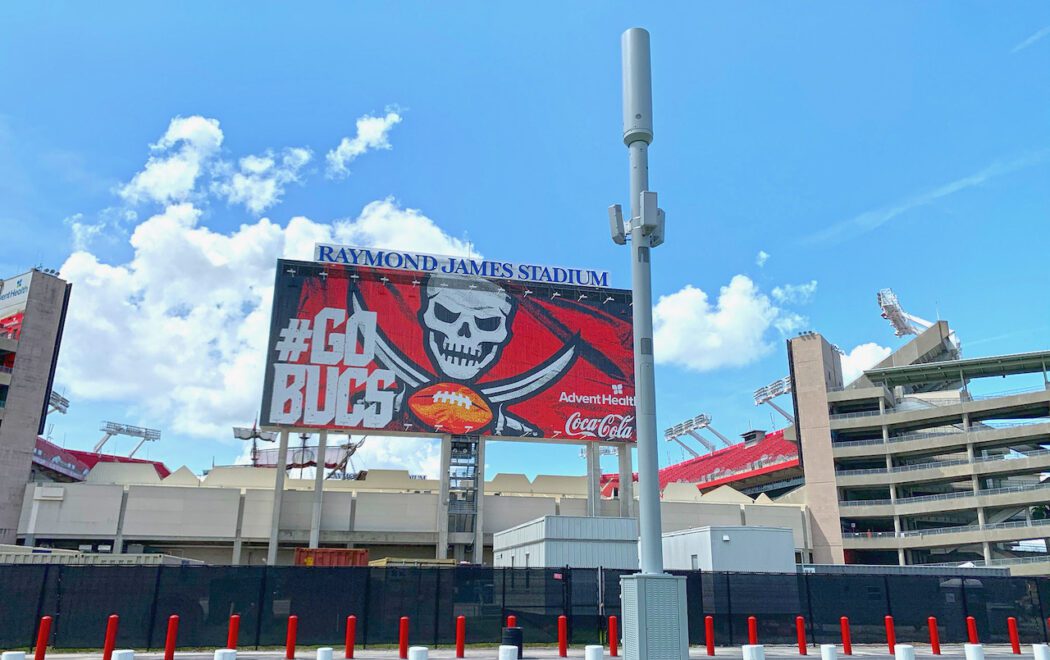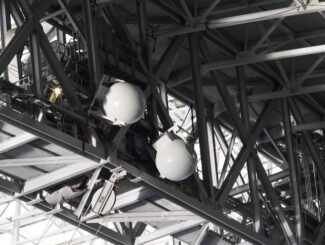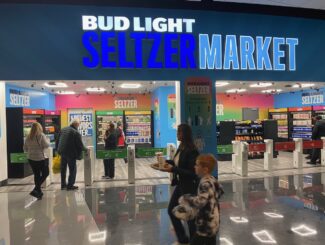
The diminished crowd size that will watch Super Bowl LV live Feb. 7 at Raymond James Stadium presents a unique challenge for the venue’s Wi-Fi network operators, who had to fine-tune a wireless deployment that is designed to support a full house.
“It’s all about optimization of RF [radio frequency],” said John Brams, senior director, venues, retail and logistics at Extreme Networks, the supplier of the gear behind the fan-facing Wi-Fi network in the Tampa Bay Buccaneers’ home stadium. But instead of the expected sellout of approximately 70,000 spectators, Raymond James Stadium will only have somewhere between 22,000 and 25,000 people in attendance for Super Bowl LV, due to Covid-19 safety restrictions for social distancing.
When Extreme put a new Wi-Fi network into the venue a couple years ago, it installed approximately 1,400 Wi-Fi access points, including 950 in the seating bowl with most of those in under-seat enclosures. Like most under-seat deployments, the network at Raymond James Stadium was designed to use the bodies of fans — known in the RF industry as “waterbags” — to block wireless signals in a beneficial way, allowing network operators to place APs closer to each other without generating interference.
With fewer fans in the building, Extreme and the Raymond James Stadium IT team had to figure out just how to “tune” the network to balance connectivity with potential interference.
Limited attendance games provided a testing ground
While Brams said Extreme and the stadium had “five different scenarios” planned for various attendance levels, from empty to full, the last few home games during the Bucs’ regular season gave the network operators a good testing ground for the eventual Super Bowl plan. At the team’s last home game on Jan. 3, there were 16,009 fans in the stands, enough to give Extreme a way to test the eventual network operation plan for Super Bowl LV.
The limited crowd, Brams said, “gave us a broad sense of what we would have to work with” for Super Bowl LV. One benefit of the under-seat deployment is that by being under seats, the APs are less likely to cause interference with other APs, unlike top-down Wi-Fi deployments where signals are more out in the open.
But even as the game will assuredly fall short of the trend of previous Super Bowls — which set overall Wi-Fi usage records year after year — Brams said Extreme still added Wi-Fi capacity to other areas of the venue, especially areas just outside the stadium, to support connectivity for other Covid-related needs, like all-digital ticketing and cashless concession operations.
In total, the venue now has 1,522 APs ready for use at the Super Bowl, with 1,439 permanent placements and 83 temporary devices. Some of those APs were mounted on poles installed by Verizon to cover the parking lots, blending 4G LTE, 5G cellular and Wi-Fi to provide complete coverage for fans’ devices. According to Extreme, the Wi-Fi APs are all 802.11ac Wave 2 (Wi-Fi 5) devices.
Per-device usage still expected to be high
One number Brams still expects to grow is the metric Stadium Tech Report has highlighted the past few years — average bandwidth used per device. While the “big number” of total tonnage at large events is usually tied to overall capacity — making it hard to compare big-event Wi-Fi totals fairly — the average bandwidth per device metric seems to be the best way to measure a large venue’s network performance, since it hones in on what is most important — how well users can use the network.
“In some of the limited-crowd venue events [at Extreme venues] we’ve seen the per-device numbers continue to grow,” said Brams. Last year at Super Bowl LIV at Miami’s Hard Rock Stadium, an Extreme-powered Wi-Fi network saw a record per-device number of 595.6 megabytes per user, a jump of more than 100 mbps from Super Bowl LIII.







